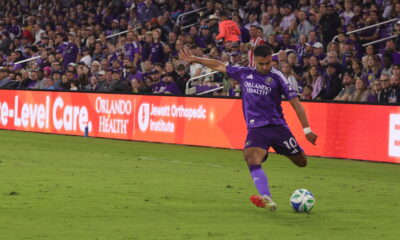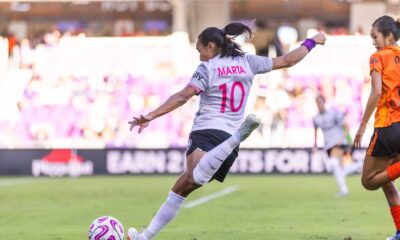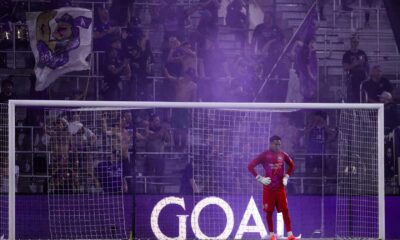Orlando City
Orlando City’s Usage Rate and Shot Creation Through Seven Games
An analysis of Orlando City’s usage and shot-creation rates and a comparison of their top performers to the rest of MLS.
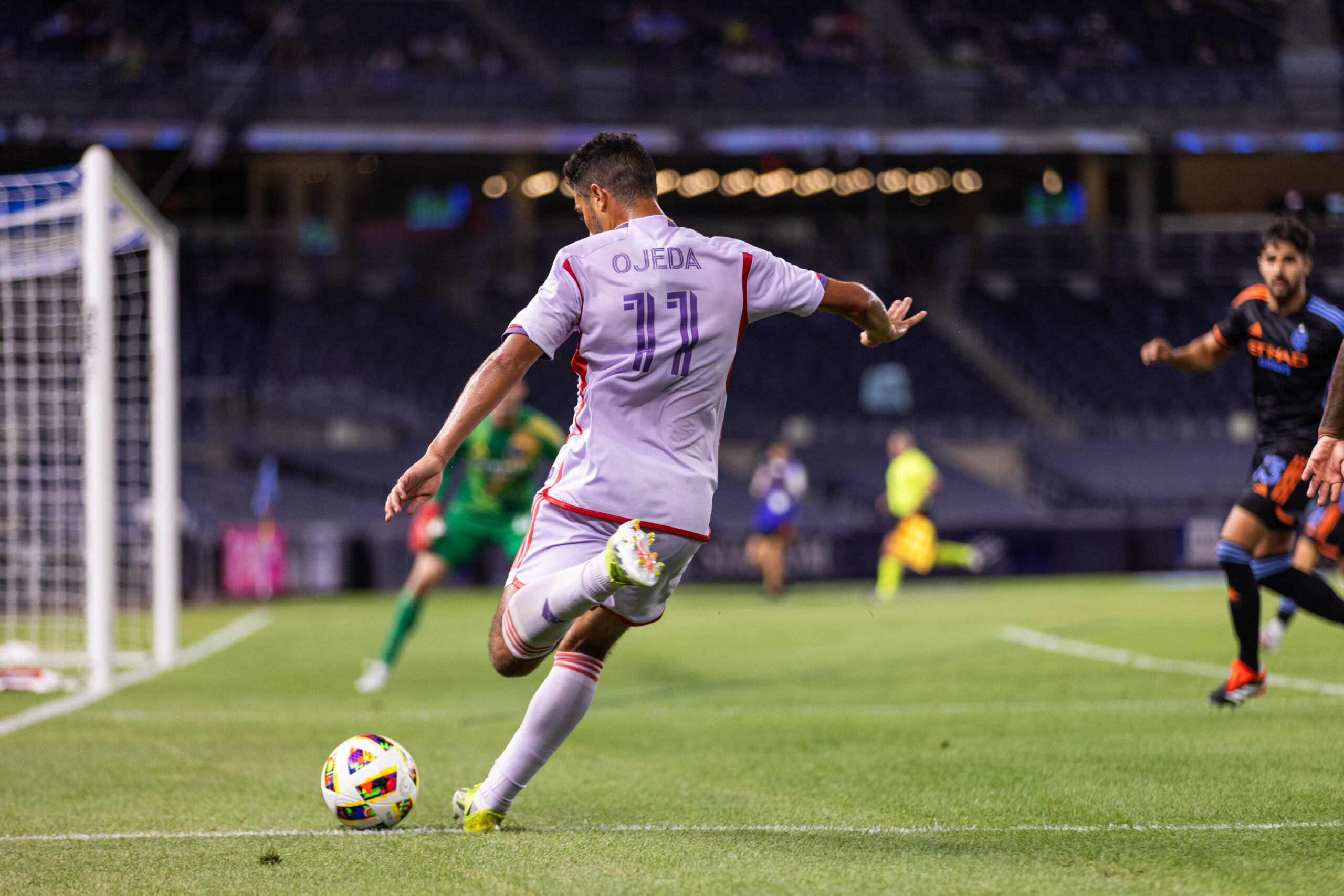
As so often happens in articles about soccer, I am going to open by writing about…not soccer. The NBA regular season is in its final days, and so a lot of the discourse on podcasts or TV shows about basketball is about who deserves what awards for the 2024-2025 season. This is not the place for that discussion, though I do think my son’s favorite Orlando Magic player, Paolo Banchero, has had a great season. What I want to explore as it relates to basketball awards is how the concept of “usage” plays a big role when comparing players against one another.
Usage in basketball is essentially a measure of what percent of a team’s possessions were finished by a given player, whether it was via a shot, turnover, or offensive foul. There are different formulas for usage, as some get even more intricate as it relates to the definition of a possession, but we are going to change the subject to soccer momentarily so let’s not dwell on the basketball metric any longer than necessary. The critical part of usage is that it is easier to put up scoring numbers — the numbers fans often default to when evaluating who are the best players, when you have a much higher usage rate. If most possessions end with the ball in your hands, then the offense is likely designed around you, and the opportunities will be there for more baskets.
In soccer, usage can be looked at similarly, with goals instead of baskets, and I will draw on the work of several other authors in how they have calculated usage, or, as they often refer to it, possession-ending actions. In soccer it is similar to basketball, but we will get more nuanced with the definition. Here are the possession-ending actions I used, with all data coming from Opta’s tracking on fbref.com:
- Shots
- Incomplete passes
- Failed Ttake-ons
- Dispossessions
- Miscontrols
I looked at this data in two ways: first by normalizing the data by taking the total number of possession-ending actions and calculating it on a per-90-minutes-played basis (PEA / 90) , and then also by taking a player’s possession-ending actions and dividing them by the total number of possession-ending actions for the whole team, to see their percentage (usage rate). Here is a look at Orlando City’s performance thus far this season (I’m only including field players who have played at least 300 minutes, but a quick shout out to Gustavo Caraballo for generating a PEA per 90 minutes of 40 in his nine minutes played thus far this season. Gustavo was really goosing the throttle when he had the ball. I’ll see myself out.):
| Player | Mins Played | PEA / 90 | Usage Rate |
|---|---|---|---|
| Rodrigo Schlegel | 630 | 7.3 | 5.5% |
| Alex Freeman | 575 | 15.2 | 10.5% |
| Martín Ojeda | 571 | 15.4 | 10.5% |
| Marco Pašalić | 550 | 15.4 | 10.2% |
| Iván Angulo | 523 | 12.9 | 8.1% |
| Eduard Atuesta | 514 | 16.1 | 9.9% |
| Luis Muriel | 490 | 16.3 | 9.5% |
| César Araujo | 450 | 5.6 | 3.0% |
| Robin Jansson | 450 | 6.6 | 3.6% |
| Rafael Santos | 420 | 18.5 | 9.4% |
It is nice when data backs up the eye test, and the eye test thus far this season definitely shows that Cesar Araujo, Robin Jansson, and Rodrigo Schlegel play conservative soccer, which is critical being that they generally possess the ball in the center of the field near their own goal, whereas the attacking players and the fullbacks are much more likely to be trying to create something on offense, and therefore ending a possession.
I was a little surprised to see Rafael Santos as the player who is ending the most possessions on a per-90-minute basis, but he is someone who is constantly looking to switch the field or play in a cross, and those are low-probability passes that have a low completion rate, meaning they often end a possession.
Usage rate depends heavily on minutes played, as despite the name, it has elements of a counting statistic in it, and it was not surprising to see the top three players in usage rate being non-central defenders who had played a lot of minutes. Santos is again high here because of his style of play, but as it appears that he may be fighting for his starting position, that number will likely drop over the next few games, unless he wins back the left back role.
As a quick aside, only one Orlando City player had a usage rate in double digits during MLS regular-season play in 2024, and as you may have guessed, that player was indeed Facundo Torres, with exactly 10%.
Usage rate is really a statistic that helps identify players who are trying to make something happen (shots, incomplete passes, failed take-ons, dispossessions) or who are targets for teammates trying to make something happen (miscontrols of a ball passed to them), but ultimately what is the most impactful when trying to make something happen is whether a shot gets created, because shots turn into goals, and that is how games are won. If we look at the same group of Lions and focus specifically on creating shots (shot-creating actions + shots taken), the story looks a little different in terms of where those come from:
| Player | Mins Played | Shots Created / 90 | Shots Created % |
|---|---|---|---|
| Rodrigo Schlegel | 630 | 1.0 | 2.4% |
| Alex Freeman | 575 | 4.2 | 9.4% |
| Martín Ojeda | 571 | 8.6 | 18.9% |
| Marco Pašalić | 550 | 5.7 | 12.2% |
| Iván Angulo | 523 | 3.1 | 6.3% |
| Eduard Atuesta | 514 | 6.0 | 11.9% |
| Luis Muriel | 490 | 7.0 | 13.3% |
| César Araujo | 450 | 2.8 | 4.9% |
| Robin Jansson | 450 | 0.2 | 0.3% |
| Rafael Santos | 420 | 3.8 | 6.3% |
Alex Freeman, Martin Ojeda and Marco Pašalić lead the way in usage rate, but they are closely grouped together, and Eduard Atuesta, Luis Muriel, and Santos were not too far behind. Ojeda is in a class by himself when it comes to creating shots though — significantly ahead of Muriel and Pašalić. Freeman is well ahead of his defensive teammates too, and if you look at the scatterplot below of all MLS defenders from 2024 and 2025, you can see that there are very few defenders who are as attack minded and who help create as high a percentage of their team’s shots as he does (Freeman’s 2025 season is in the purple bullseye, 2024 defenders played at least 500 minutes and 2025 defenders played at least 300 minutes):
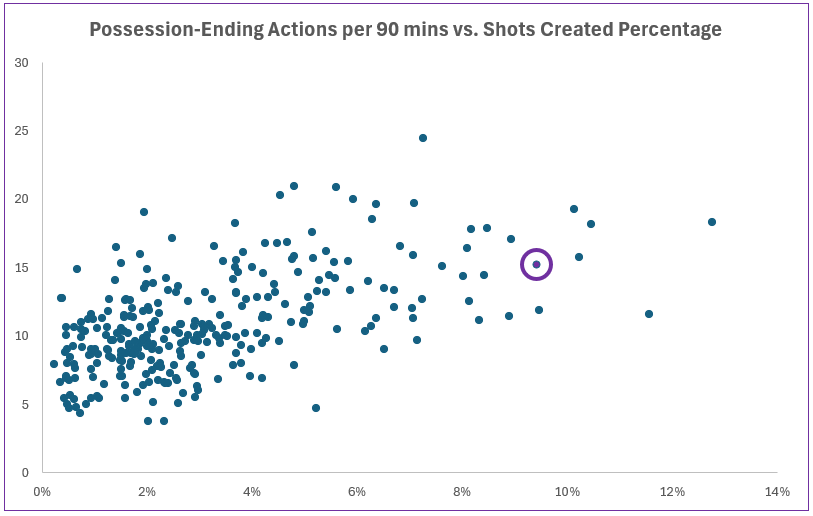
I know someone who was driving the Freeman bandwagon last year, and that person, who may or may not have written the words you are are reading right now, is pretty fired up about how much he is contributing for the Lions this season.
I mentioned earlier that Ojeda is well ahead of his teammates in 2025 in shot-creation percentage, but there are some other MLS players who are far more of a focal point of their team’s offense than he is. The below chart is formatted similarly (the y-axis is on the same scale but the x-axis is not, as attacking players generally create a much higher percentage of shots), and is for midfielders and strikers for for the 2024 and 2025 MLS seasons (Ojeda’s 2025 season is in the purple bullseye, and the same minimum minutes played requirements are in place):
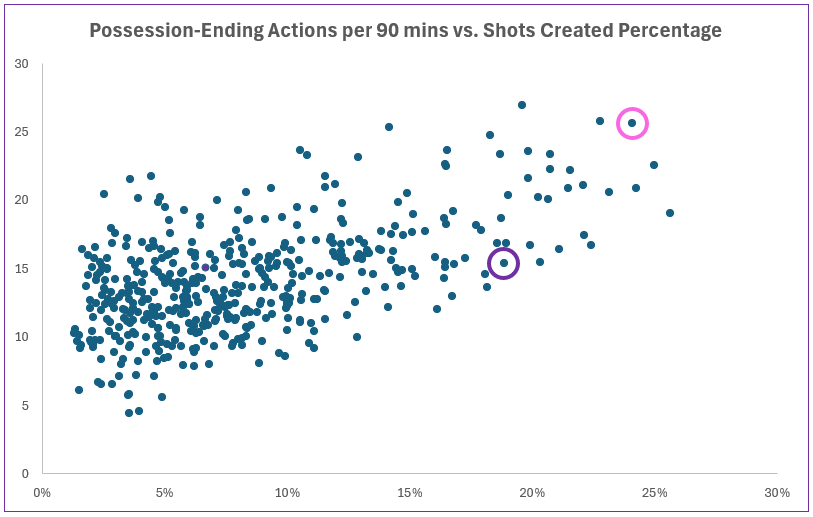
As you might have guessed from the pink bullseye, that is indeed Lionel Messi, with his 25.6 possession-ending actions per 90 minutes and 24% of his team’s shots created thus far this season. Messi’s metrics existing above and to the right of Ojeda’s on this chart is not an indication that he is better than Ojeda (although to be fair, he might be), but what it shows is that he initiates more attacking plays and is involved in more of Miami’s shots than Ojeda is in Orlando City’s.
The age-old quantity vs. quality conversation exists as it relates to looking at usage rate and the percentage of shots created by a player. Whether it be basketball or soccer, teams are not looking for players who create or take shots. They want players who will create and make shots. Taking on defenders every time you receive the ball or constantly trying to hit risky passes will increase the various counting and rate stats, but unless a player is successful with those take-ons and passes, what they will more likely get is a seat on the bench and a pause on accumulating any new stats.
I will be tracking the usage numbers throughout the season, and we will revisit them later in the year to see what has changed. With the return of Duncan McGuire to fitness, it will be interesting to see what that does to Ojeda’s usage if he starts to play more minutes out on the wing — and also to that of Muriel if he more frequently plays as the number 10 instead of playing as a striker. The insertion of David Brekalo into the starting lineup may unleash Freeman even more and evoke more comparisons to his wide receiver father as he flies up the sideline looking to receive a long bomb and turn it into a score.
In the end, the stats from this article are not ones that players will be trying to improve. They are more descriptive statistics that explain how the team — and particularly the offense — has interacted thus far this season. Usage rate may be important, but what is more important is that Orlando City gives the opposing net some serious usage in the match this weekend.
Vamos Orlando!
Orlando City
Orlando City vs. Colorado Rapids: Three Keys to Victory
What does Orlando City need to do in order to pick up three points on its trip out west?
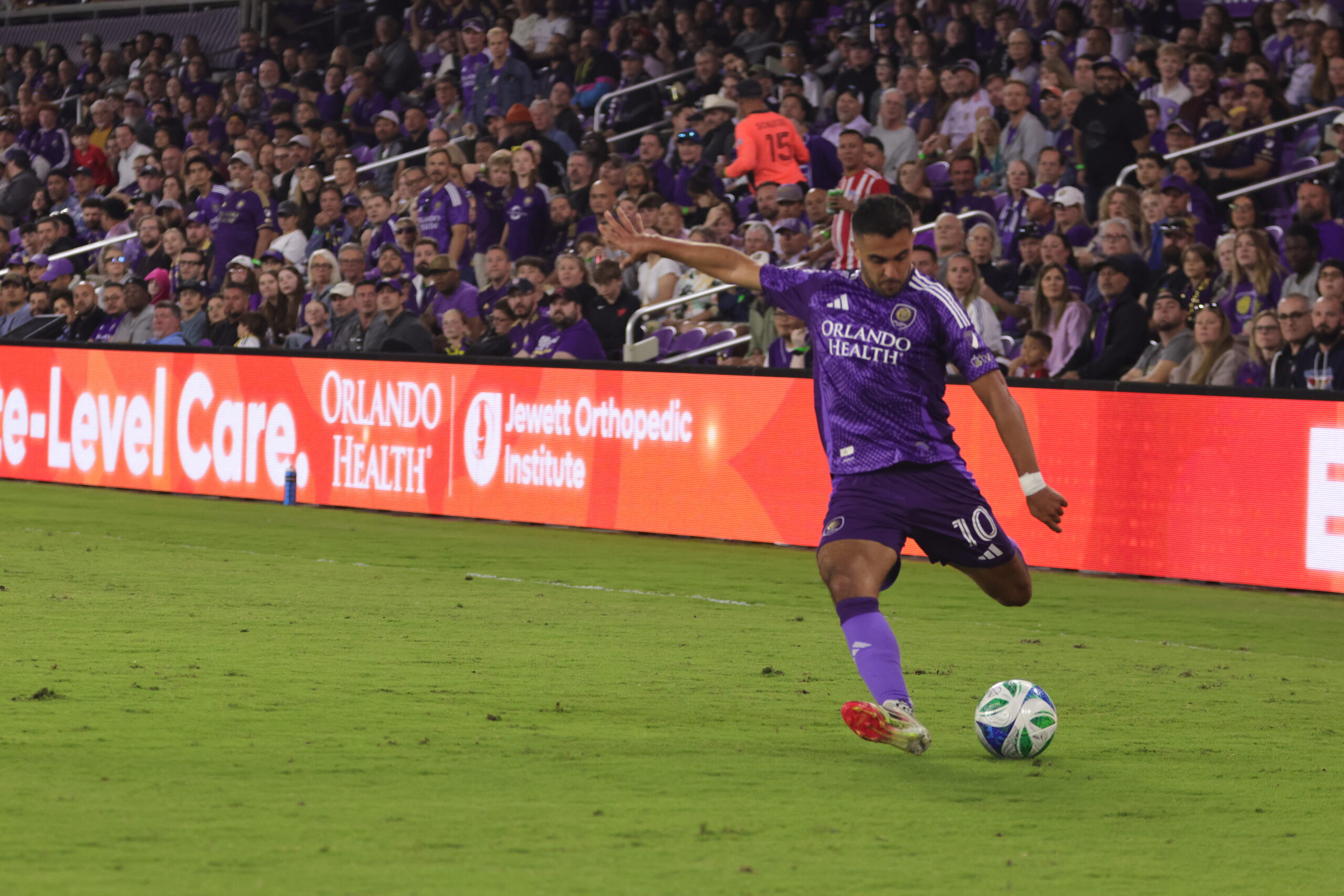
After playing its last game all the way back on May 31, Orlando City will return to action Saturday night when it takes on the Colorado Rapids out in Denver. What follows are three things that I think will go a long way towards helping the Lions get back to winning ways out on the edge of the Rocky Mountains.
Respond Well After Time Off
Having an extended break between games can be a double-edged sword. On one hand, it can give a team time to get healthy, rest up tired legs, and fix any issues that have become evident over the last few games. You might see an energized and focused performance after being able to recharge, implementing some tactical tweaks, and using the extra time to extensively prep for the upcoming match. On the other hand, you might also see a team with its fair share of ring rust. There’s a difference between practice intensity and game intensity, and sometimes it can be hard to ramp back up to the necessary levels after having an extended period of time without games. For Orlando City, it needs to be the former and not the latter. We were treated to an uncharacteristically sloppy performance during the 3-1 loss to the Chicago Fire in the team’s most recent game, and much of what we saw can probably be attributed to fatigue after a grueling May schedule. With any luck, the two weeks that the Lions got between games will help bring back the kind of performances that we saw during the extended unbeaten run.
Maintain Defensive Structure
The Rapids are currently ninth in the Western Conference with 22 points from 17 games. Goal-scoring issues are the primary reason for Colorado occupying the spot that it does, as it has scored just 18 goals in 17 games. The Rapids have scored more than two goals twice this season — in a 3-3 draw against FC Dallas, and a 3-2 home win against San Diego FC. Orlando City has largely tightened things up on defense after an oddly sloppy start to the season, although the defensive issues returned with a vengeance in the loss to Chicago. If the Lions can regain their usual stability at the back, then it’ll go a long way towards picking up three points against a team that’s tied for the seventh-fewest goals scored in the league.
Mute Mihailovic
The best way to go about neutralizing the Rapids on offense is to shut down Djordje Mihailovic. He has seven goals and three assists in 17 games and leads Colorado in both categories. Rafael Navarro is next on the goal contributions list with five goals and one assist, and there’s then a steep drop-off to Oliver Larraz, Cole Bassett, and Darren Yapi, all of whom have three goal contributions. Mihailovic also leads the team with 49 key passes, which is more than double what second-place Navarro has, with 22. Anybody can hurt you on any given day, and the Lions have an unfortunate habit of conceding goals to guys who never seem to score, but the numbers say that if you manage to contain Mihailovic, then it takes away a bulk of Colorado’s danger on offense.
So there you have it. If the Lions can have the right response after their time off, maintain the sort of defensive stability we’ve seen from them most of the year, and put a muzzle on Mihailovic, they should be well set up to claim all three points from their trip out to Denver.
Lion Links
Lion Links: 6/13/25
Orlando City prepares for the Colorado Rapids, Concacaf W Champions Cup schedule released, USWNT tops FIFA rankings, and more.
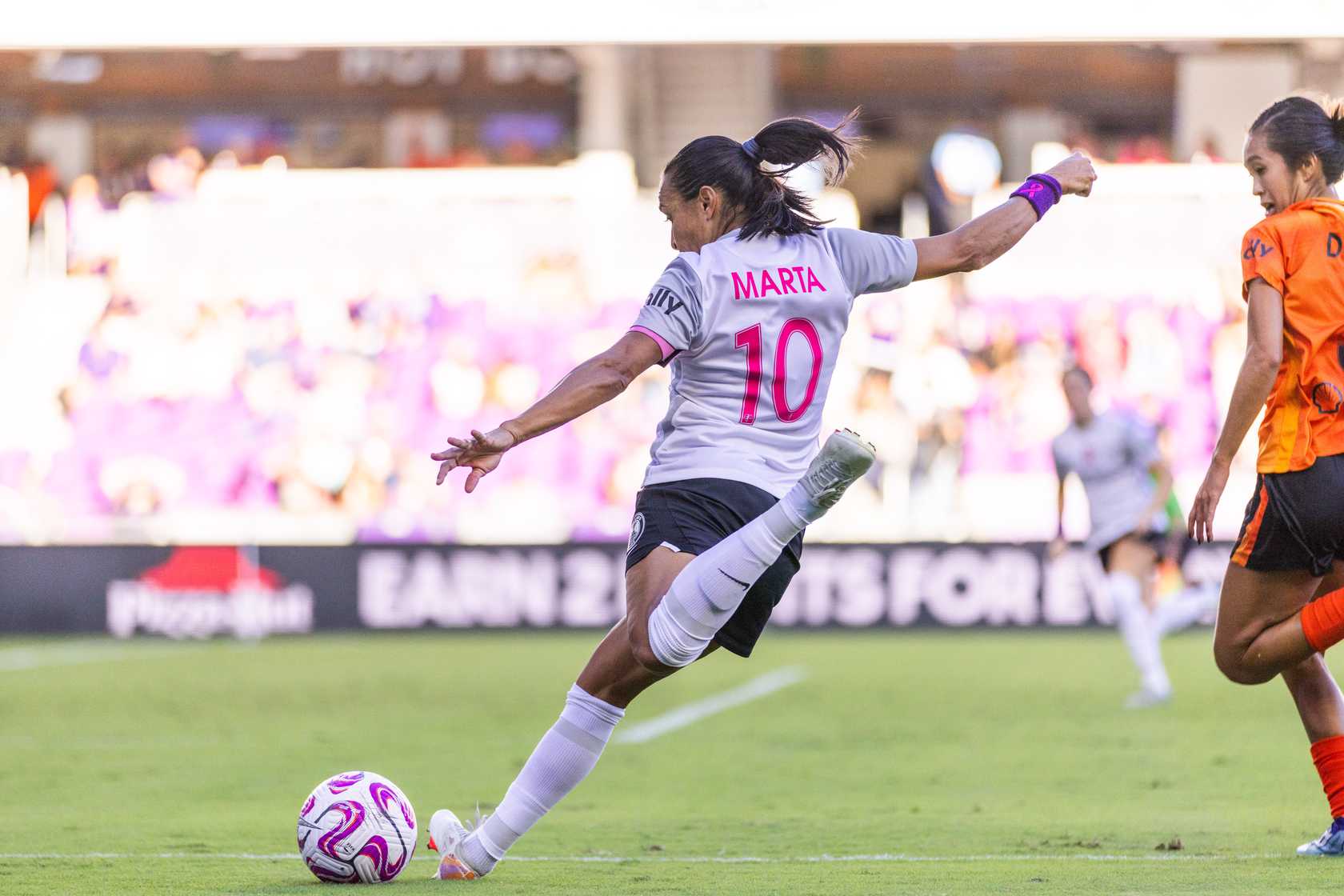
Happy Friday! We have some exciting soccer ahead of us over the next few days, starting with the Orlando Pride’s road game against Bay FC tonight at 10 p.m. I’ll be spending most of the weekend working and visiting family for Father’s Day. Let’s go ahead and get this Friday started with today’s links from around the soccer world!
Orlando City Prepares for the Colorado Rapids
The Lions are back in action on Saturday for a road match in high altitude against the Colorado Rapids. Orlando City is coming off a needed break in the schedule after losing two games in a row to close out a busy May. The Rapids have also lost their past two league games and will be without goalkeeper Zack Steffen due to injury. This will be the team’s first match against the Rapids since a 2-0 victory in Orlando back in 2023 and the first in Colorado since a 1-1 draw in 2022. Hopefully the Lions can get back on track with a win to kickstart another strong summer.
Concacaf W Champions Cup Schedule Revealed
The schedule was unveiled for the Concacaf W Champions Cup and we now know where the Pride will be playing this fall. Their campaign will begin at Inter&Co Stadium against Costa Rican club LD Alajuelense on Sept. 2. They’ll then hit the road for their next two matches, playing Chorrillo FC in Panama on Sept. 16 before facing Club America on Sept. 30. The Pride will close out their group play with a home game against Pachuca on Oct. 15. The top two teams from the group will advance to the semifinals, and the winner of the tournament will earn a spot in both the 2027 FIFA Women’s Champions Cup and 2028 FIFA Women’s Club World Cup. It’s going to make for some late-season fixture congestion for the Pride, but that’s the price of success and earning a spot in continental competitions.
USWNT Remains Atop FIFA Rankings
The United States Women’s National Team is still the best team in the world according to the latest FIFA rankings. The U.S. lost points overall in the time since the last rankings in March though, and the gap has narrowed between it and Spain and Germany. Brazil had a decent rise in the rankings, moving up four spots to fourth after beating Japan twice in recent friendlies. With notable international tournaments lined up for this summer, it will be interesting to see how much things shake up when the next rankings come out.
Michael Bradley Named New York Red Bulls II Head Coach
Former USMNT midfielder Michael Bradley was hired as head coach of the MLS NEXT Pro’s New York Red Bulls II. It’s the 37-year-old’s first professional head coaching job after spending time as an assistant coach under his father, Bob Bradley, at Stabaek in Norway. Bradley returns to where he began his professional playing career, as he was drafted by the MetroStars in 2004 at the age of 16.
“I couldn’t be more excited to come back to where my professional playing career began,” says Head Coach Michael Bradley. “This is a dream opportunity as a young coach. I’m looking forward to working everyday with this talented group of players, and I’ll give everything to help them take the next step in their careers. I’m thankful to the club for the opportunity and can’t wait to get started.”
Free Kicks
- Vancouver Whitecaps left back Sam Adekugbe is out for the season due to an ACL injury sustained in a friendly with Canada.
- The draw for the final round of Concacaf World Cup qualifying was completed, with the 12 teams slotted into three groups of four. Panama and El Salvador were drawn together, while Costa Rica was drawn into a group with Honduras, Haiti, and Nicaragua.
- Tottenham named Thomas Frank as its next head coach, inking him to a deal that lasts until 2028. He joins after seven years as Brentford’s manager, which included promotion to the English Premier League in 2021.
- Napoli won the Kevin De Bruyne sweepstakes, with the 33-year-old choosing to join the Serie A champs after 10 years with Manchester City.
- Michal Probierz has resigned as Poland’s head coach only a few days after striker Robert Lewandowski said he will no longer play for the national team so long as Probierz was in charge. Lewandowski was replaced as team captain before Poland’s 2-1 loss to Finland in World Cup qualifying.
- Galatasaray added German winger Leroy Sane on a free transfer, signing him to a three-year contract. Sane will still be available to play at the Club World Cup with Bayern Munich.
- Manchester United signed Brazilian forward Matheus Cunha to a five-year contract. The 26-year-old scored 17 goals for Wolverhampton last season.
- You’ll need to get past the paywall for the full details, but this is a great dive into the importance of Senegal’s recent 3-1 win over England in a friendly. The win extended Senegal’s unbeaten streak to 22 games and gives the team plenty of momentum as it prepares for World Cup qualifiers this fall.
That’s all I have for you this time around. I hope you all have a fantastic Friday and rest of your weekend!
Orlando City
The State of Orlando City at the Halfway Point of the MLS Season
An analysis of Orlando City’s offensive and defensive performances through the first half of the 2025 MLS season.
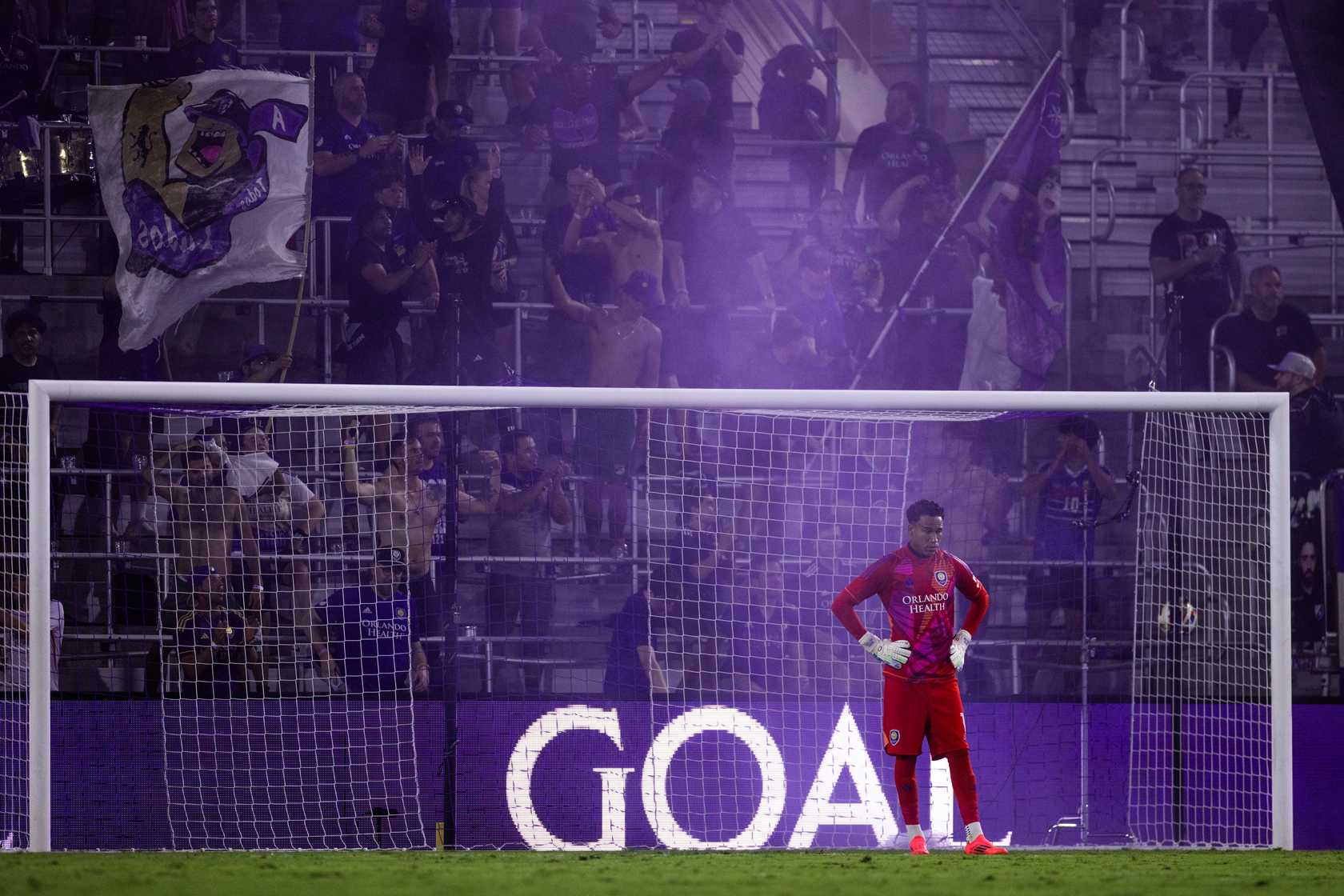
I attended my high school reunion this past weekend (let’s agree not to discuss how many years it has been since I graduated), and late in the evening on Saturday night a karaoke machine appeared. What to my wondering ears did I hear but a great many hits that came from yesteryear. One of those hits, naturally, was karaoke staple “Livin’ on a Prayer” from Bon Jovi, with the famous line of “ohhhhh, we’re halfway there” which every…single…person in attendance sang along with. We probably gave karaoke a bad name.
Orlando City did not have a game during this weekend, but after its last game — one we can also agree not to discuss — the Lions also are halfway there, with halfway there in this case being the halfway point of the MLS regular season. Being that we are at the halfway point, I thought it would be a good time to check in on their performance thus far, so let’s take a look at how the squad is doing in some key metrics.
We shall start on defense, because defense wins championships and because, as Linkin Park sings on one of my son’s favorite songs, when talking about a soccer lineup we usually work up from the bottom. Using Opta’s tracking from fbref.com, here is how Orlando City fared on defense during the first 17 games (MLS Avg. is the average of every team except Orlando City):
| Metric | OCSC | MLS Avg. | MLS Best | OCSC Rank |
|---|---|---|---|---|
| Goals Allowed per 90 | 1.29 | 1.39 | 0.75 | 11 |
| Shots on Target Allowed per 90 | 4.12 | 4.30 | 2.44 | 12 |
| Shots on Target Allowed % | 32% | 35% | 24% | 10 |
| Goals per Shots on Target Allowed | 29% | 32% | 21% | 13 |
| Non-Penalty: G-xG Allowed (full season) | -1.7 | -0.8 | -8.5 | 14 |
| PSxG +/- per 90 | +0.12 | +0.05 | +0.39 | 8 |
The first four rows are pretty self-explanatory, with the team just outside the top third (MLS has 30 teams) in keeping the opponents from putting shots on target and into the net. Prior to the most recent game, the one I do not want to talk about, like Bruno, the team was ranked 10th, giving up 1.19 goals per 90 minutes, but the disastrous first 32 minutes against Chicago knocked OCSC down a spot. In fairness, Chicago has one of the league’s best offenses, but still. Yuck.
The bottom two rows in the table above are the fun advanced stat metrics, with Non-Penalty Goals – Expected Goals being the comparison of actual goals allowed thus far this season to expected goals allowed, and since the Lions’ value is negative, that means that they have given up fewer goals than they were expected to. The defense is performing better than the MLS average, but because several defenses are significantly overperforming against expected goals, the team is only ranked 14th.
Where the Lions are doing much better is in the goalkeeper-focused stat of Post Shot Expected Goals – Goals Allowed, which is the stat that takes into account not just the location of the shot but also how well the shot was struck. In this case, a positive value is good, as it means that the expected goals allowed is greater than the actual goals allowed, and Orlando City’s goalkeepers did well to put the team in the top 10 in this metric.
The last area to look at on the defensive side is the lineups that have been used the most on the back line thus far, and unlike in past seasons, there is a clear first-choice back line playing most of the minutes (1,530 total minutes have been played) through the first half of the season (players listed from left to right just as they play on the field):
| Back Line | Mins | Goals Allowed per 90 | +/- per 90 |
|---|---|---|---|
| Brekalo – Jansson – Schlegel – Freeman | 816 | 1.10 | +0.77 |
| Santos – Jansson – Schlegel – Freeman | 234 | 1.15 | +0.88 |
| Santos – Jansson – Brekalo – Freeman | 95 | 0.00 | 0 |
| Smith – Jansson – Schlegel – Freeman | 92 | 1.96 | 0 |
| Santos – Smith – Schlegel – Freeman | 90 | 2.00 | +2.00 |
I am interested to see what happens in the second half with regard to the back line, as I am not confident that by crunch time in October that it will still be the four on the top row of that chart who are the first choice back line. That said, this group is averaging only giving up 1.10 goals per 90 minutes and is +8 for the season, and the group that played the most in 2024 gave up 1.37 goals per 90 minutes and finished at only +2. Coming off a two-week break, we will see who gets the starts, and whether Rafael Santos can reclaim the left back position and/or if David Brekalo moves inside to center back. Robin Jansson and Alex Freeman are not going anywhere, but the other two spots may see some changes in the upcoming months.
On the whole, Orlando City’s defense has been solid but not spectacular in MLS play. The Lions have seven shutouts, but they also have seven games of giving up at least two goals and four games of at least three goals allowed. Some of the defensive lapses have been pretty rough, and an overall performance that puts them right on the cusp of the top third but squarely not in the top third feels right to me with how they have played this season.
And now from defense to offense, where there has been much more variation in the lineups and much better performance overall, though as I wrote a few weeks ago, I think the offense should be performing even better than it has. Looking at the same statistics as we did for the defense, plus a few more, we can see that the Orlando City offense is a top 10 offense in the most critical metric of all, goals scored, but not in some of the other metrics, which is a cause for concern:
| Metric | OCSC | MLS Avg. | MLS Best | OCSC Rank |
|---|---|---|---|---|
| Goals Scored per 90 | 1.82 | 1.37 | 2.25 | 7 |
| Shots on Target per 90 | 4.88 | 4.28 | 6.12 | 8 |
| Shots on Target % | 32% | 35% | 44% | 25 |
| Goals per Shots on Target | 34% | 32% | 48% | 5 |
| Non-Penalty: G-xG (full season) | +1.1 | -0.9 | +8.4 | 12 |
| Big Chance Conversion | 28% | 37% | 55% | 28 |
| Goals Scored by Designated Players | 20 | 8.1 | 20 | 1 |
The Lions are still on pace to set a club record for goals scored in the MLS regular season, and had they scored one additional goal during the first 17 games, they would find themselves in the top three for goals scored per 90 minutes. Orlando City played a volume game in the first half of the season, ranking eighth in shots on target per 90 minutes, allowing the team to offset a lower-than-league-average performance in the percentage of shots that ended up on target. When the Lions put their shots on target, they converted them better than most, but the team struggled all season long with the final product, as evidenced by the poor performances in the percentage of shots that went on target and the conversion of what Opta deemed to be big chances.
Fellow Floridians Inter Miami converted its big chances at nearly double the rate of Orlando City, and if the Lions converted at that same rate, they would have scored 0.88, or basically one, more goal per game. It is an oversimplification to say this, but I will point it out anyway, the Lions lost two games by one goal and tied six games, and an extra goal in any of those games would have earned Orlando City more points, and with just three more points they would be sitting in second place in the conference. During the preseason, I predicted Orlando City would finish third in the Eastern Conference, so yes, I am a bit salty about all of the dropped points.
Coming back to the offensive metrics, Orlando City is outperforming its expected goals err…expectation…but not by so much that the Lions are among the top teams in the league. Where they are at the top is in the goal-scoring by their three Designated Players, and with the recent injury news about Duncan McGuire the DPs will need to continue that goal-scoring form to get results.
In looking at the attacking lineups, no group has even played the equivalent of three full games together through the first 17 games of the season. Injuries and untimely (read: bleeping stupid) red cards contributed to the large amount of different lineups, and by my count, the team has already rolled out 55 different attacking groups thus far this season. The five groups that played the most constitute only 56% of the total minutes, and no group seems to have established itself as the favorite to emerge as Óscar Pareja’s go-to group.
| Attacking Group | Mins | Goals Scored per 90 | +/- per 90 |
|---|---|---|---|
| Muriel Angulo – Ojeda – Pašalić Araújo – Atuesta | 230 | 1.96 | +0.39 |
| Muriel Angulo – Ojeda – Pašalić Araújo – Gerbet | 206 | 3.50 | +2.18 |
| Muriel Angulo – Ojeda – Pašalić Gerbet – Thorhallsson | 174 | 0.00 | 0.00 |
| Enrique Angulo – Ojeda – Pašalić Araújo – Atuesta | 130 | 2.77 | +0.69 |
| Muriel Angulo – Ojeda – Pašalić Atuesta – Gerbet | 113 | 2.39 | -1.59 |
The group in the top row may have the inside track, but it was in the second half of the season in 2024 when Ramiro Enrique seized the starting role and Luis Muriel started to excel in a supersub role, so the door is open for any of these, or other, attacking groups to establish themselves as that go-to starting group. The MLS Secondary Transfer Window opens on July 24, and that could be a time to bring in another player to compete for offensive minutes as well.
On the whole, Orlando City’s offense has been really good, bordering on great. No team is immune to bad games, but with 31 goals in 17 games, the team has been far more of a real lion than a paper lion on the offensive side of the ball. Long-time fans of Orlando City will remember several (2017, 2018, 2019, 2022) seasons when the team scored fewer than 45 goals during the full 34-game season, so to see nearly two goals per game this season has been a great sight.
Orlando City has a near-top 10 defense and an offense that is among the best in the league, and if the Lions had just kept their heads instead of receiving not one, not two, but three ridiculous red cards, they likely would be in a league table position that is more fitting for how well they played for most of those first-half games.
Soccer is always a game of inches and milliseconds, and the Lions can point to a whole series of almosts and what-ifs that would have/could have/should have led to different results. They did not happen though, which is why the team sits at only 1.59 points earned per match, 11th best in MLS and placing them in seventh in the Eastern Conference.
Historically, Orlando City plays better in the second half of the season than the first, and if this team can repeat that pattern and execute just a little bit better, it will once again be primed to make a deep run in the playoffs. During the past three seasons, the OCSC season ended in the first round (2022), conference semifinal (2023), and conference final (2024), and I think this team has the ability to continue that run of advancement and make it to MLS Cup.
And speaking of run, the highlight of that karaoke I mentioned earlier was not New Jersey natives Bon Jovi, but rather a classmate of mine absolutely crushing a performance of a song by a different New Jersey icon, the Boss, Bruce Springsteen’s “Born To Run.”
Let’s hope that at the end of the season we are all singing along together as well, specifically to another classic rock anthem — Queen’s “We Are the Champions.”
-

 Lion Links2 weeks ago
Lion Links2 weeks agoLion Links: 5/30/25
-
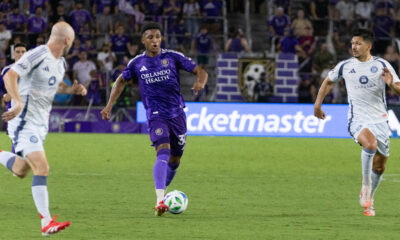
 Orlando City2 weeks ago
Orlando City2 weeks agoOrlando City vs. Chicago Fire: Final Score 3-1 as Dreadful Defending Dooms Lions
-
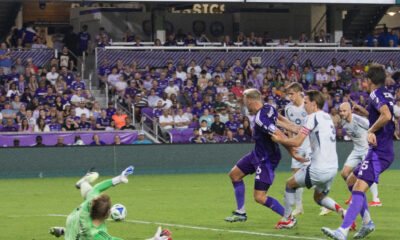
 Orlando City2 weeks ago
Orlando City2 weeks agoOrlando City vs. Chicago Fire: Five Takeaways
-
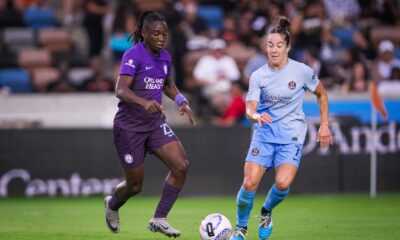
 Orlando Pride7 days ago
Orlando Pride7 days agoOrlando Pride vs. Houston Dash: Preview, How to Watch, TV Info, Live Stream, Lineups, Match Thread, and More
-
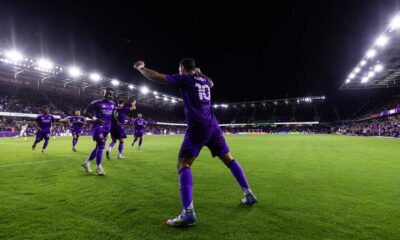
 Opinion2 weeks ago
Opinion2 weeks agoPredicting Orlando City’s June Results
-
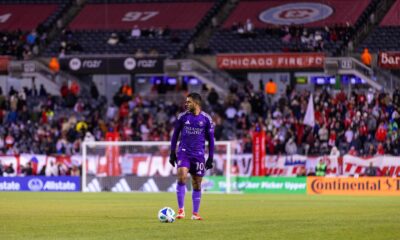
 Orlando City2 weeks ago
Orlando City2 weeks agoOrlando City vs. Chicago Fire: Preview, How to Watch, TV Info, Live Stream, Lineups, Match Thread, and More
-
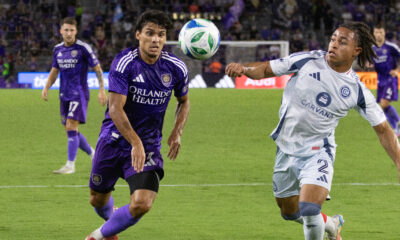
 Photo Galleries2 weeks ago
Photo Galleries2 weeks agoOrlando City vs. Chicago Fire: Photo Gallery
-
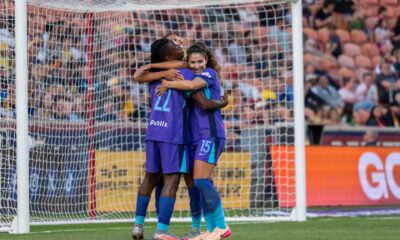
 Podcasts1 week ago
Podcasts1 week agoSkoPurp Soccer Episode 89: International Pride, Listener Mail, Houston Preview, and More


